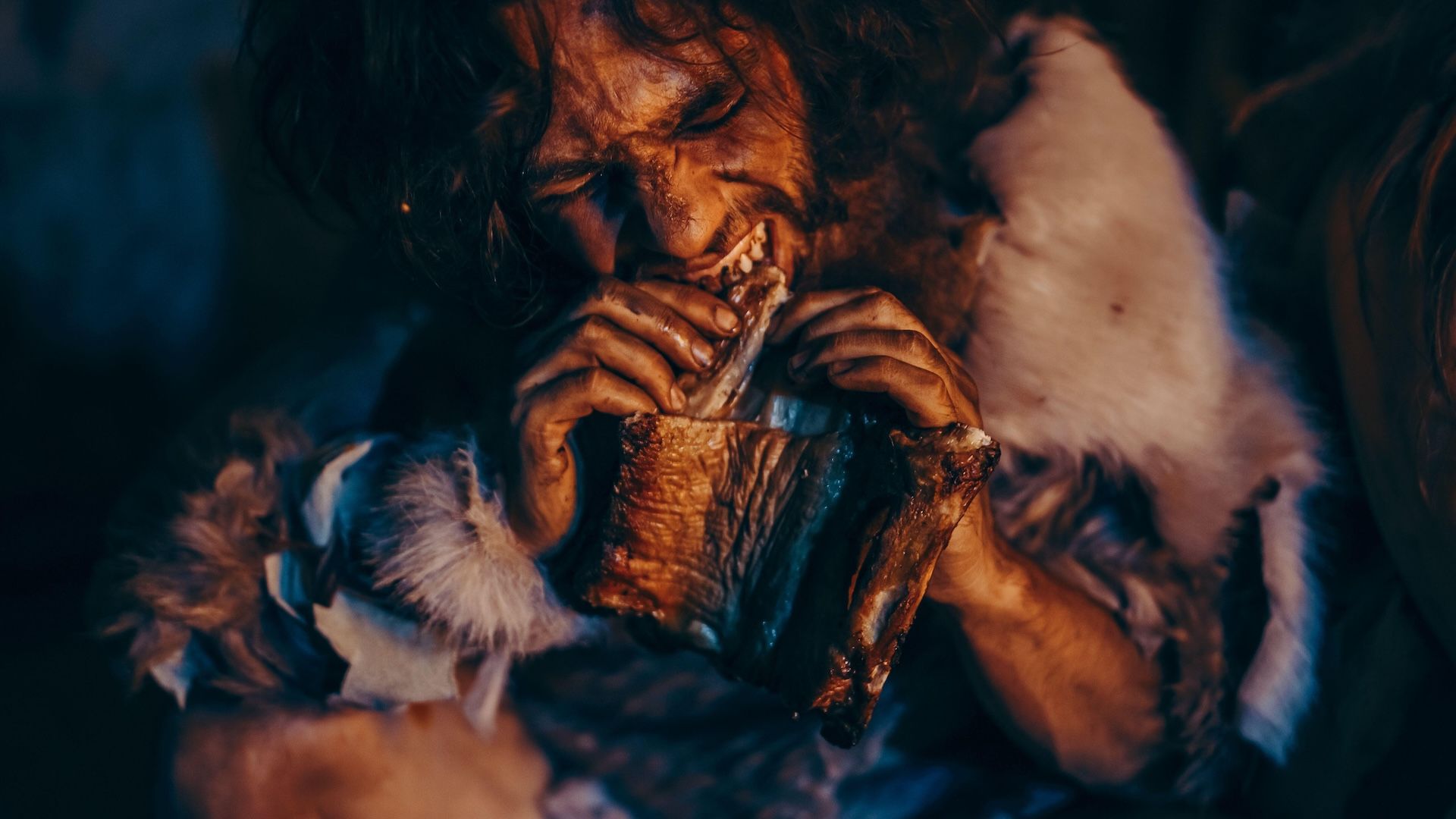Neanderthals, our extinct cousins, are often portrayed as eating nothing but meat — no fruit, no grains, no greens. But did Neanderthals really live on meat alone?
While there’s plenty of evidence that Neanderthals regularly chowed down on meat, a growing body of research shows our close evolutionary relatives, who went extinct more than 30,000 years ago, also ate other parts of animals besides their meat, such as fat extract from the bone marrow, as well as other foods, including pistachios, lentils and wild peas.
“Multiple independent isotope studies now converge on the same conclusion,” Ludovic Slimak, a paleoanthropologist at the University of Toulouse in France and author of “The Naked Neanderthal” (Penguin Books, 2023) and “The Last Neanderthal: Understanding How Humans Die” (Polity, 2025), told Live Science in an email. “Neanderthals consistently present the isotopic signatures of top-level carnivores.”
At the site of Gabasa in Spain, for example, analyses of calcium, strontium and zinc isotopes showed that Neanderthals were hypercarnivores who survived mainly on meat and bone marrow. From what we know, Neanderthals were apex predators, Slimak said, much like wolves and hyenas, which sit at the top of the food chain with no natural predators.
This idea is supported by earlier nitrogen isotope studies, said Hervé Bocherens, head of the biogeology research group at the University of Tübingen in Germany.
Nitrogen comes in two stable forms, or isotopes: nitrogen-14 and the less common nitrogen-15. When animals eat other animals, the heavier nitrogen-15 slowly builds up in their bodies. That means animals that eat meat have more nitrogen-15 than plant eaters.
“In most Neanderthal specimens that have been analyzed, the nitrogen-15 content was higher than those measured in large carnivores, such as cave lions, cave hyenas or wolves,” Bocherens told Live Science in an email. “The conclusion was that Neanderthals were ‘more carnivore than the carnivores’ (hypercarnivores).”
However, he added, this interpretation is too simple. Nitrogen levels can vary depending on which animals Neanderthals ate, not just how much meat they consumed.
“Woolly mammoths consistently exhibit the highest nitrogen-15 levels among herbivores, probably due to the consumption of plants with high nitrogen-15 levels,” Bocherens said. The data suggest that Neanderthals were predators that consumed a higher proportion of mammoths than they did of other carnivores in the ecosystem, Bocherens added.
A 2025 study offered a different explanation for Neanderthals’ unusually high nitrogen-15 levels: They may have eaten maggots, either by accident, in the process of eating rotting meat, or on purpose.
“Both rotting meat and especially maggots feasting on the rotting meat have high nitrogen levels and any Neandertal eating those foods regularly would have an isotopic signature that is off the charts,” April Nowell, a Paleolithic archaeologist and professor of anthropology at the University of Victoria in British Columbia, told Live Science in an email.
But could Neanderthals survive on a solely meat-based diet?
“They could not if they had a similar physiology as modern humans, which is likely,” Bocherens said. “There is a need for dietary sources of energy.” Eating too much protein without enough fat and carbohydrates, which supply most of our energy, can lead to a fatal condition known as protein poisoning or “rabbit starvation.”
Their solution, scientists think, was fat. At one 125,000-year-old German site, researchers found evidence that Neanderthals systematically broke animal bones to extract fat from bone marrow. Animal brains were another probable source of fat, Bocherens said.
When whole carcasses are consumed, including marrow and fat reserves, an animal-based diet is perfectly viable, Slimak said.
Neanderthals ate more than meat and fat
Neanderthals may have found creative ways to balance their nutrition. They might have eaten the stomach contents of their plant-eating prey, Chris Stringer, a research leader in human origins at the Natural History Museum in London, told Live Science in an email.
Scientists agree that Neanderthals also ate plants when they were available. “There is extensive evidence for plant eating by Neanderthals,” Nowell said. That evidence includes actual plant remains discovered in caves, microscopic traces left on stone tools, and even plant residues preserved in dental plaque and fossilized feces.
Food remains found in modern-day Israel suggest Neanderthals ate legumes, acorns and pistachios, Nowell said. In Greece and Iraq, plant remains suggest they soaked, pounded and ground lentils, nuts and grasses — a form of food preparation that may have helped remove bitter flavors. In Gibraltar, researchers found the charred remains of edible plants like wild olives and stone pine nuts. In Italy, starch grains found on stone tools hint that Neanderthals were even making a kind of flour.
At El Sidrón Cave in Spain, chemical analyses of dental plaque revealed that Neanderthals ate plants like yarrow and chamomile, likely for medicinal purposes. And, at an open-air archaeological site called El Salt in Alicante, Spain, researchers found significant levels of plant sterols (fats in plants that are similar to cholesterol) in fossilized Neanderthal feces.
In warmer regions, Neanderthals likely gathered a wider range of plant foods, including seeds, starchy root vegetables like tubers, and even dates in the warmest regions, said Robert Power, a research fellow in the School of Archaeology at University College Dublin.
Although Neanderthals were skilled hunters who relied heavily on animal foods, “they varied their diets depending on where and when they lived, adapting to local foods and changing with the seasons,” Nowell said.
